14 Images released on Monday 13/02/2023
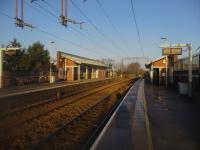
Theobalds Grove: Theobalds Grove on 21st January 2023. Opened in 1891 but closed from 1909 until 1960 (apart from WWI use 1915 to 1919) it was used as housing accommodation for some of that last period of closure and required only minor renovation for its permanent reopening. Unfortunately, the original canopies have been replaced and modern shelters built onto the Victorian walls which are somewhat better, I suppose, than the uninviting bus stop type shelters at so many stations. Should there not be an apostrophe before the S in the stations name? I think there should.

Barnetby: 66152 working the 0730 Drax to Immingham empty coal hoppers at New Barnetby on 16th February 2016.
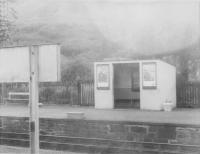
Strathyre: Strathyre station showing the seldomn photographed passenger shelter on the Northbound platform.
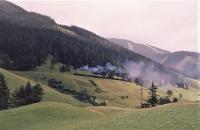
Glaslbremse: The hills of Austria's Styrian Alps were often alive in 1970 to the sound of 'railway' music from OBB Class 97 tanks slogging up the standard gauge rack-assisted incline from Vordernberg to Praebichl. Note the Giesl ejector on the locomotive at the head of the train. The banker, out of sight at the rear, had a conventional chimney.
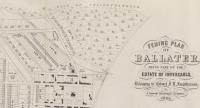
Ballater: Extract of estate feuing map at Ballater dated 1866. Note that the proposed railway continues beyond the station site; it is clear that Col. Farquharson intended to build the line to Braemar. Just south of the station is the outline of an L-shaped building. This was Monaltrie Cottage where the Station Agent and his family lived. James Cowie was the Agent from line opening until retiral in 1907; a grand total of 40 years and six months. By 1895 the house had been demolished to make way for civic buildings. Text by Charlie Niven. Reproduced with the permission of the National Library of Scotland
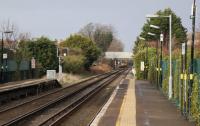
Wallasey Village: The view towards New Brighton from Wallasey Village station. The EMU is calling at Wallasey Grove Road, a mere 25 chains (0.5km) away. Wallasey Village opened in 1907, some nineteen years after the line itself, and was originally known as Leasowe Road.
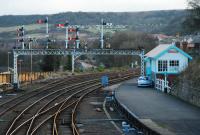
Scarborough: Falsgrave signal box and the semaphore gantry at the southern end of Scarborough station are seen in this 2008 view looking to the south.
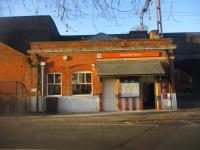
Theobalds Grove: The refurbished entrance hall to Theobalds Grove station, most northerly on the Southbury Loop, serving a part of Waltham Cross, and the only one to retain its original name when the Churchbury Loop as was reopened on electrification in 1960 after 41 years and re-christened the Southbury Loop. Churchbury station became Southbury and Forty Hill station was renamed Turkey Street. All three had originally opened in 1891 but closed in 1909 due to tramway competition. A brief reopening occurred between 1915 and 1919 before the permanent 1960 reopening when many local residents at the time could hardly believe their derelict old railway really had been brought back to life. This line and station were transferred to TfL ownership as an additional part of the London Overground network on 31st May 2015.
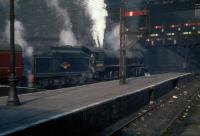
Glasgow Queen Street High Level: Eastfield's B1 61440, with the self-weighing tender, seems anxious to leave Glasgow Queen Street High Level on 23 February 1963 with a train for Edinburgh. It is about to do battle with the formidable Cowlairs incline with the aid of a V1/3 2-6-2T banker.

Tebay: 46100 'Royal Scot' attacks the gradient at Greenholme with 1Z20, the 05:50 Rugby to Carlisle 'The Lakelander' on 11 February 2023. Tebay village and misty Howgill Fells can be seen in the background.
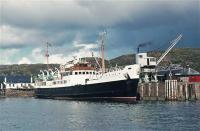
Kyle of Lochalsh: MV 'Loch Seaforth' at Kyle of Lochalsh in 1966.
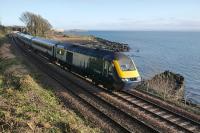
Newbigging Siding: The 13.09 Inter7City service from Aberdeen to Edinburgh, powered by 43150 and 43136, passes an old limestone shipment pier below Newbigging Quarry on 30 January 2023. Tree clearance has opened up the views of the line from the Fife Coastal Path.
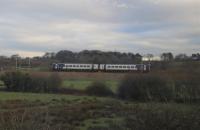
Morecambe South Junction: If the branch train is held on the curve at Morecambe South Junction, it means something is passing on the main line. On 26th January 2023 it was 158855, on a Lancaster to Leeds service, seen through the Sprinter's window. The recent announcement of funding for the 'Eden Project Morecambe' should have a positive effect on services and patronage on the Morecambe branch.
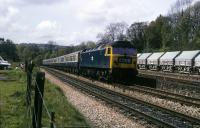
Bodmin Parkway: 47032 passes china clay hoods as it arrives in Bodmin with 1A49 1205 Penzance to Paddington service on Sunday 2 May 1976. At this time the station was still known as Bodmin Road but from 1983 became Bodmin Parkway. The loco will work to Plymouth where more coaches will be attached. The headcodes were no longer displayed on locos from Jan 1976 with the indicator wound to 0000, or in some cases such as the 'Westerns' to display the loco number.
